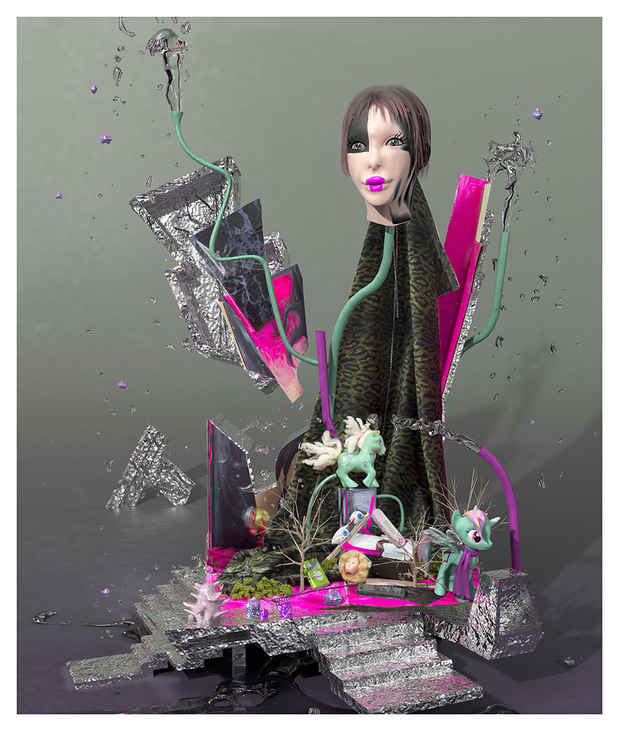“STILL.LIFE” Exhibition
OUTLET

This event has ended.
The European tradition of still life painting is rooted in the Christian notion of a fallen world in need of redemption and offers concise signifiers for the complexity of life. Northern European painters, such as Jan Van Eyck (1390-1441), employed optical realism and allegorical symbolism in their work. Van Eyck’s portrait of Italian merchant Giovanni Arnolfini and his wife uses highly illusionistic techniques to portray the opulent details of their home and the virtues of their financial success. The groundbreaking Italian artist Jacopo de’ Barbari (1440-1516) established still life as a genre independent from the religious art of the Renaissance period. Painted on a humble scale, De’ Barbari’s Still-Life with Partridge and Iron Gloves elevated everyday objects as sites for contemplation. Later artists, such as Spaniard Juan Sánchez Cotán (1560-1627), demonstrated an enlightened view of nature and the enjoyment of daily life. Although his work emphasized the beauty of the natural world, it also conveyed the reality of death and decay. The pervasive theme of vanitas is fundamental to the ethos of still life, and artists such as Cotán vividly captured the impermanence of life.
Referencing this extended history, contemporary artists are contemplating the lineage of European still life to arrive at thought-provoking images of nature morte that are relevant to the contemporary imagination, where tenuous interdependent global economies, dramatic climate changes, and violent civil conflicts have heightened our sense of potential collapse and the fragility of life.
The most literal nod to the trompe l’oeil character of still life on view at OUTLET gallery is the painstakingly hand-built arrangement of meticulously painted porcelain flowers titled Phase Change, by Genesis Belanger. Clearly a gestural interpretation of nature, these flowers are vigorous in their detail while representing a point of stasis. The vase of flowers seems to melt before our eyes, a solid object transforming into a liquid state in a phase change artificially suspended by the artist. By halting the breakdown of the material, Belanger further emphasizes the ephemeral nature of perception.
In his most recent multimedia installation, Brent Everett Dickinson explores ideas of time and mortality by synthesizing signature visual and textual elements, such as stock landscape wallpaper, fake rocks, sound and drawing-paintings. Each of these objects can be read as a presage of the New Heavens and the New Earth, a central theme in Christian eschatology. The consciousness of this post-apocalyptic world is featured in the installation of a prophetic rock that groans, a text-based fossil fish rendering barren soil fertile, and small stones ecstatically filled with the Holy Spirit.
Andrew Ross challenges the viewer’s expectations of pictoral space by reinterpreting the edges of the image, as well as suggesting a tension between internal and external worlds. His custom-built frames and sculptural objects expand our reading of the photograph or assemblage, as his ideas refers a wide range of visual and literary sources. Ross has stated that each new work grows out of the ideas of his previous work and incorporates its failures. Working in photography, sculpture, and textile, his work examines the objects and methods of daily life translated through theoretical constructs.
Katie Torn skillfully challenges our experience of the physical and virtual worlds by merging the language of photography, video, and animation. Torn’s multi-layered work is supported by her knowledge of digital practices and Modernist art history. The virtual totemic sculptures she creates are assemblages of physical structures comprised of throwaway objects: old plastic toys, defunct technology, plastic containers and simulated objects found on the Internet. She also uses digital techniques such as camera tracking, 3D animation, and set-up photography used to create commercials and Hollywood films to merge images from the real world with those generated by a computer. She subverts these tools to make fantasy worlds that critique the toxic consumer waste cluttering the environment and media landscape. Her work becomes a reverse nature morte.
The dense and kinetic wall tapestries of Heeseop Yoon are inspired by the memory and perception of cluttered spaces. She uses photographs of interiors such as basements, workshops, storage spaces, and studios that are cluttered to the point of obscurity, with no trace of human presence. Yoon draws her subject matter freehand on sheets of transparent polyester film with black tape. She attaches these Mylar panels to the gallery wall and finishes the drawing with black tape to create a site-specific work investigating the materialism and consumption that clouds our perception. Yoon retains her exploratory sketches and keeps drawing until she is satisfied with the form. The sketches feel fluid and immediate and levitate on the wall.
Media
Schedule
from March 08, 2014 to March 30, 2014
Opening Reception on 2014-03-08 from 18:00 to 22:00